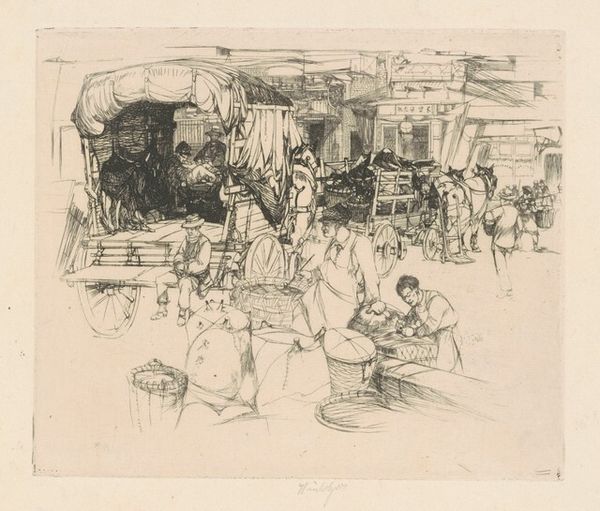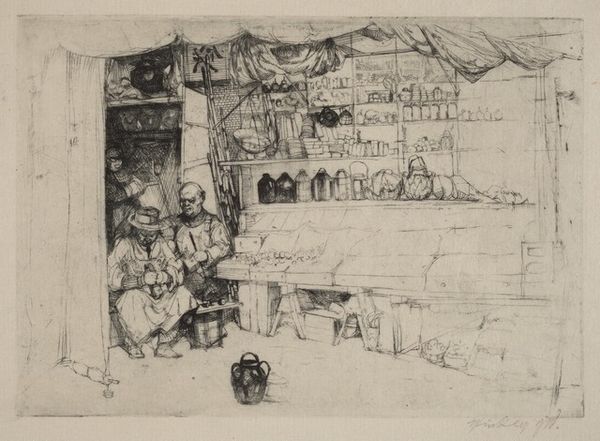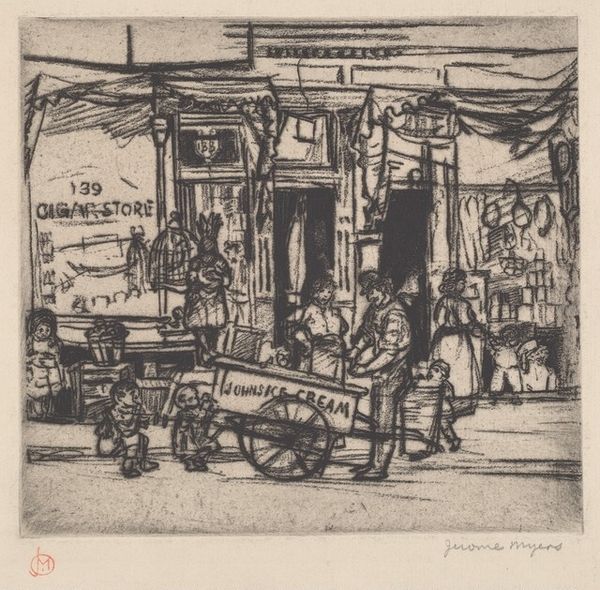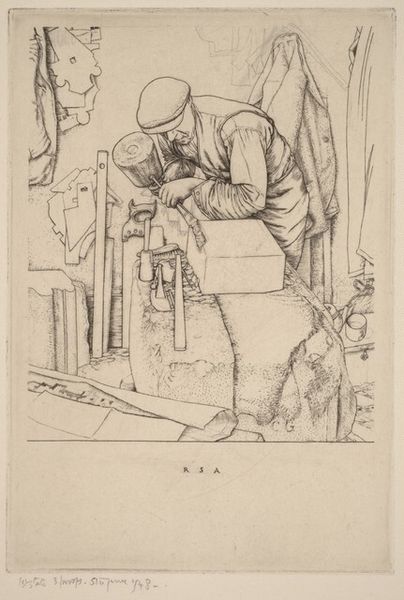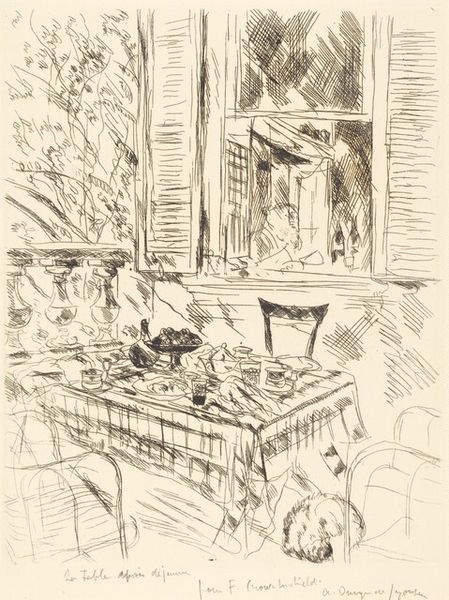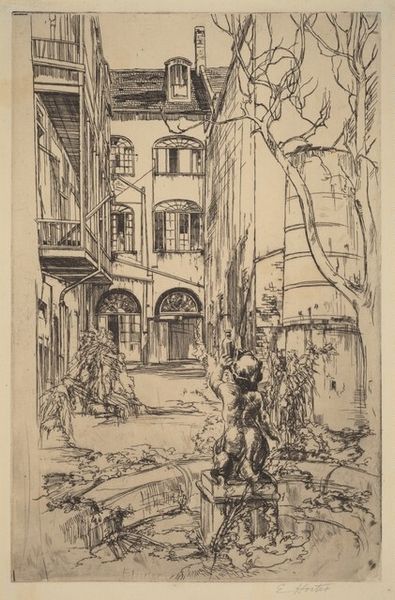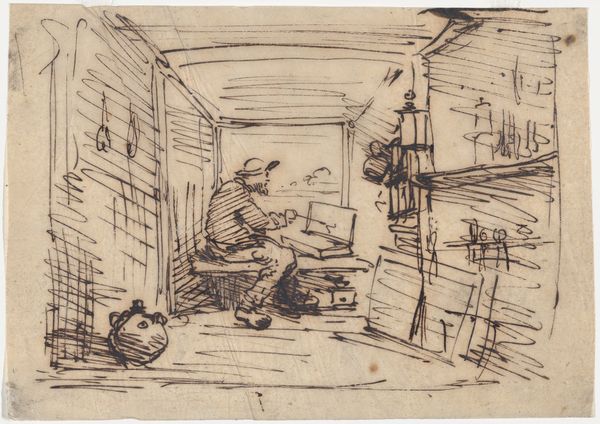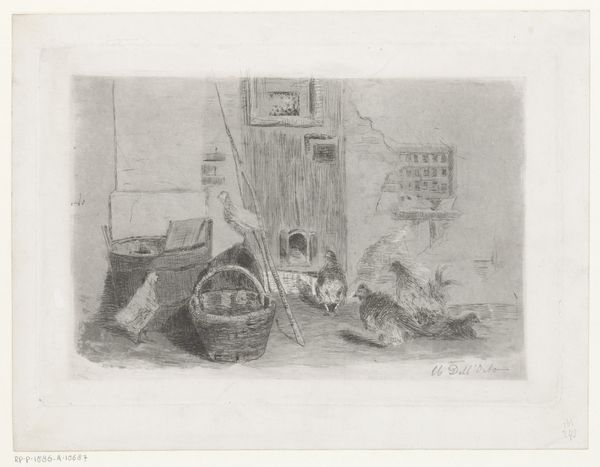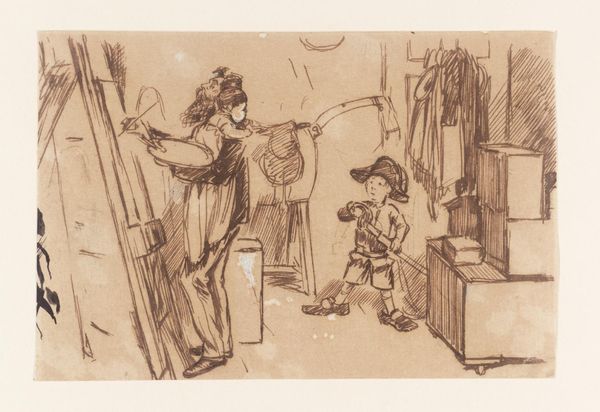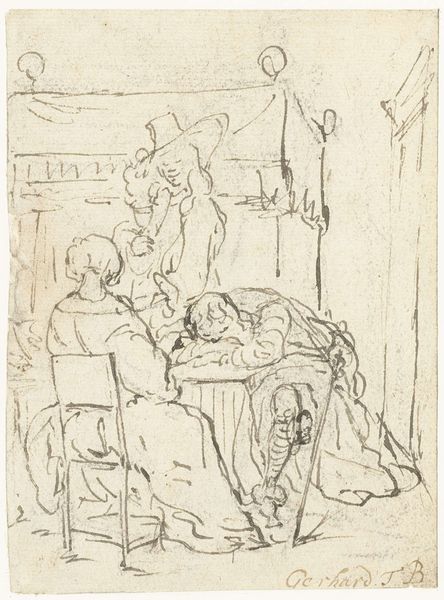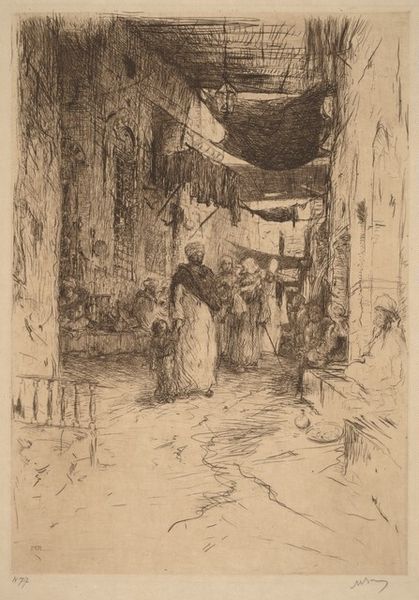
print, etching
# print
#
etching
#
cityscape
#
genre-painting
#
realism
Dimensions: plate: 12.54 × 10.32 cm (4 15/16 × 4 1/16 in.) sheet: 20.64 × 16.35 cm (8 1/8 × 6 7/16 in.)
Copyright: National Gallery of Art: CC0 1.0
Curator: This print, titled "Small Fruit Stall," was created in 1918 by John W. Winkler. As you can see, it’s an etching, a medium that really captures the gritty details of urban life. Editor: It’s definitely got a melancholic air, doesn’t it? That lone figure seated by the stall seems weary, a kind of resigned presence amid the flurry of activity hinted at in the background. Curator: Right, Winkler was known for capturing the everyday, the unsung laborers. Consider the historical context: 1918, the tail end of World War I. Shortages and societal upheaval likely touched even these small vendors. It really shows the economic strain of this specific historical moment. Editor: I’m also drawn to the materiality, the sheer labor implied in the fruit stall. All of this product for sale indicates human labor, from cultivation to transportation and even the setup and display of the fruit. Each piece carefully chosen. We're looking at someone trying to eke out a living during a turbulent time. The contrast of light and shadow emphasizes the grit, but it romanticizes it, in a way, I'm afraid. Curator: I see your point. Looking through the lens of feminist theory, this is where the artwork subtly portrays gender. In most instances, you had marginalized communities that included not only those of color but even poorer women in the neighborhood or older workers whose physical labor was no longer required. I ask how does it reveal intersectional power dynamics related to economics, labor, and access in relation to the figure? Editor: Absolutely, thinking about production reveals an unspoken hierarchy. Where is the labor situated, and who is benefiting from it? Also, I think Winkler masterfully uses line weight to define the depth. You have so many goods spilling into our space that there must have been consideration about whether this business can weather this storm and if the owner would lose capital investment or make ends meet? The loose strokes on the awning against the tighter hatching used on the cart. What message is he sending to those on the other side who come here and want a piece of the pie? Curator: Absolutely, this print provokes a multilayered exploration. A lens for questioning assumptions about urban commerce in the early 20th century that also draws our awareness to the globalized systems of our own consumption in the contemporary era. Editor: I concur, this reminds us to reconsider the processes embedded in seemingly straightforward everyday interactions, to think of all the elements involved with running such a humble business that can also show global economic power and capital influence during these post war conditions.
Comments
No comments
Be the first to comment and join the conversation on the ultimate creative platform.


